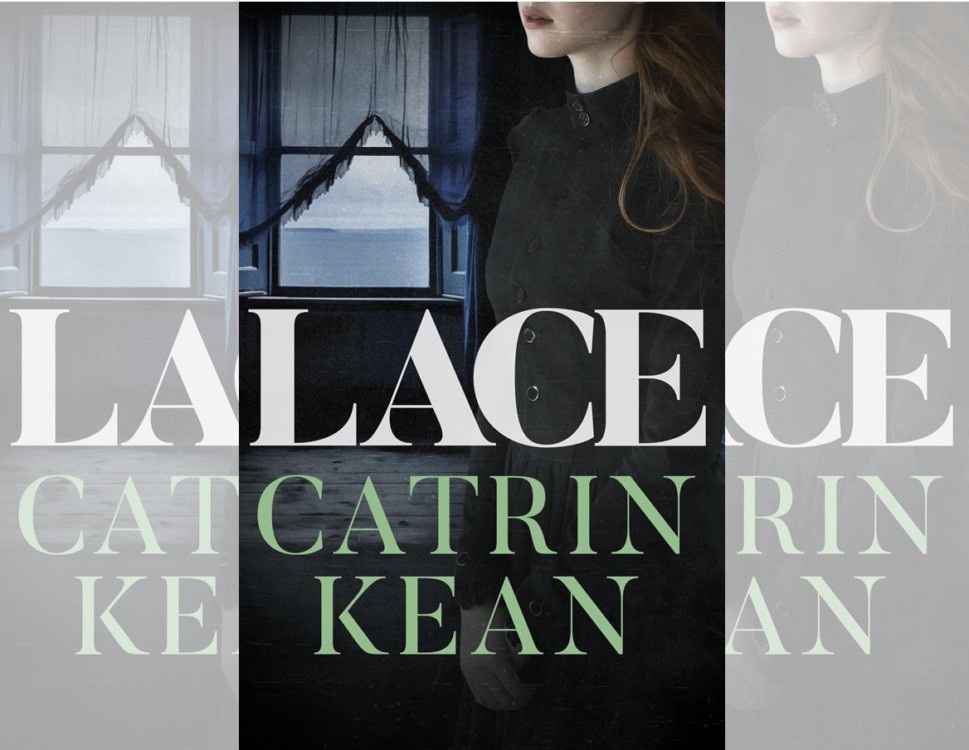Book review: Lace by Catrin Kean

Hannah Evans
“When Mary Byrne was six years old she learned that fear is a shapeless thing, like water, filling every available space.”
The sequel to Kean’s prize-winning debut novel, Salt, Lace shares the story of Mary Byrne as she grapples with painful childhood memories during her early days of motherhood.
Opening in early 1900s Wicklow, Ireland, we meet Mary as a confused and scared six year old. She and her siblings are swept from their chaotic yet beloved seaside home in Wicklow after their father’s death, taken to a Dublin orphanage while their mother trains as a nurse. The experiences at the orphanage continue to haunt Mary long after she settles in Cardiff with her Welsh-Bajan husband Louis, particularly after the birth of her daughter dredges up memories she thought she’d suppressed.
For fans of Salt, this novel will be an utter delight to read: Kean’s trademark style of restrained, beautiful prose weaves intricate images, transporting the reader with her vivid, lyrical writing. “Their voices clamber over one another, interrupting, imitating, misunderstanding, understanding. Like a song.”
Memory and trauma
“Birthing a child is like a tide flooding in. And tides uncover things that would have been better to have remained hidden.”
Sublime
Rachel Tresize put it best when she describes how ‘Kean’s writing is much like the lace Mary crafts in this sublime novel, intricate and delicate, tightly woven, robust and finely controlled.’ Throughout the novel, the structure flits back and forth between Mary’s present day shortly after the birth of her daughter, Teresa, and the childhood memories which refuse to remain hidden.
Yet the extent of the horrific circumstances in which she was placed at the orphanage are not revealed in their entirety to begin with: we see the memories through the eyes of a child, charting her friendship with the haunting and damaged Glennie, her only friend in the loveless place.
We soon learn that Mary is separated from her sisters on arrival, and Glennie becomes her confidante. There are heart-breaking descriptions of how the two kept their spirits from shattering, pretending that crumbs from the table were cakes and tarts; sharing stories of mermaids in the river Liffey; making dolls from scraps.
Vivid
The descriptions in the orphanage are so vivid, it would be difficult to read this without having to pause at moments or two: particularly when contrasted with Mary’s beloved memories of her earlier years, before she was abandoned. Glennie asks of Mary’s home, ‘what did it look like?’ to which Mary replies; ‘A little white cottage joined onto another cottage where old Mrs O’Connor lives and potatoes growing deep in the wet earth in the garden and the dog barking at the wooden gate which hung a little wonky on its hinges and a river behind and a mountain and the sea in front with all the fishing boats.’
‘And what did it sound like?’
‘Like crackling wood an footsteps on tiles and giggling sisters and someone whispering and someone snoring and the wind rattling the windows. And like boats jangling in the harbour and Mad Maggie singing rude songs in the dark and the sea going ‘ssshhh.’
As the memories continue to unfold in Mary’s present day – 1910s Cardiff – we gain a stronger understanding as to why she struggles to bond with her much-wanted baby.
Love story
At heart – and I’ll admit, as a historical romance writer myself I may be over-enthusiastic about this narrative element – Lace is a love story. It is a story of love between a mother and her children, love between sisters, aunties, nieces, friends, lovers, husband and wife.
Mary’s love story with Louis is the fast-won romance you would expect for the time, with their whirlwind honeymoon period ending swiftly when Mary arrives in Cardiff to be faced with hate for marrying a Black man. Although the date is not given, the reference to the Cardiff race riots of 1919 set the story firmly in its historical context, illuminating the human story behind the historic headlines.
The intergenerational family living under one roof, all with a blend of cultural backgrounds, feels distinctly Cardiffian – it tells of a lost time in Tiger Bay, and speaks to the power of the community to recover from horrific and baseless attacks. There is a particularly poignant moment when Mary insists on accompanying Louis to help put a raided shop, owned by a mixed-race couple, back together. ‘Mary stepped inside, into the stench of burned oil, and saw a white woman sitting on a stool with her head in her hands. Mary knew what it was like to lose everything, and that there was nothing that could be said. She touched the woman’s arm lightly and picked up a sweeping brush.’
Overall, Lace manages to weave themes of love and family, race and belonging, identity and self-actualisation, forgiveness and trauma. And of course, it is about much more than this.
Lace is an impressive, poetic rumination on the need for connection, sharing a glimpse into an often-overlooked period of Celtic history. I certainly look forward to our next installment from Kean.
Lace by Catrin Kean is published by Honno Welsh Women’s Press. It is available from all good bookshops.
Support our Nation today
For the price of a cup of coffee a month you can help us create an independent, not-for-profit, national news service for the people of Wales, by the people of Wales.






